The 1000 Islands region is part of the St. Lawrence Seaway, connecting Lake Ontario with the Gulf of St. Lawrence and then the Atlantic Ocean. This important waterway sees a large amount of shipping traffic transporting cargoes between these large bodies of water, and connecting parts of the industrial heartlands of both the US and Canada to the Atlantic and the world. The narrow passage, with its multitude of islands and shoals, combined with both fog and current, present navigational challenges that have inevitably led to accidents and ships sinking over the years. Many of these shipwrecks are still there, and well preserved due to the freshwater environment, for divers to explore. |
 |
 |
AE Vickery (sunk August 15,1889)
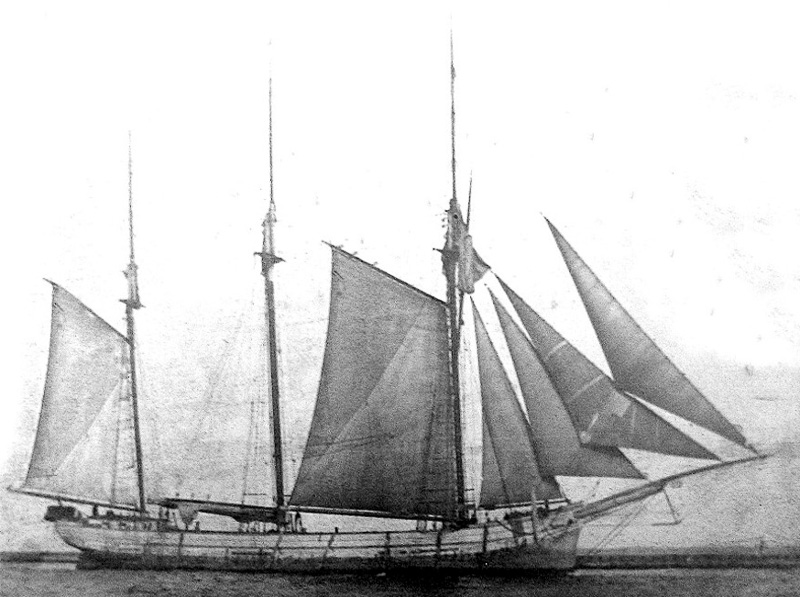 |
The AE Vickery was a three-masted schooner that ran into a shoal off Rock Island Lighthouse and sank on the night of August 15,1889. Laden with a cargo of grain the ship had left Cicago earlier that day and headed downriver. Proceeding downriver the Vickery was under the command of Captain John Massey. Although only 34 years old, Captain Massey had made the downriver voyage at least a dozen times before; nevertheless he stopped in Fishers Landing and picked up a river pilot, Henry Webber, to guide the ship's navigation. Only 15 minutes after taking the pilot onboard the Vickery struck the shoal that would end her career. Captain Massey was so angry at the pilot's incompetence that he tried to shoot the pilot with a revolver, getting off a single shot that missed its mark before the ship's mate knocked the gun out of his hand. The pilot tried to escape but was detained and asked for his pilot's license. The captain and crew escaped in the Vickery's yawl as the ship quickly sank. The Vickery slid off the shoal the following day and settled in about 65 feet of water. The masts were knocked down to remove any hazard to navigation and reportedly still lie on the river bottom stretching out into the channel. The wreck site often has a swift current running on it and the hull seems largely intact. Reference: Palmer, Richard. AE Vickery Hits a Shoal, Thousand Islands Life, Volume 16, Issue 3, March 2021. |
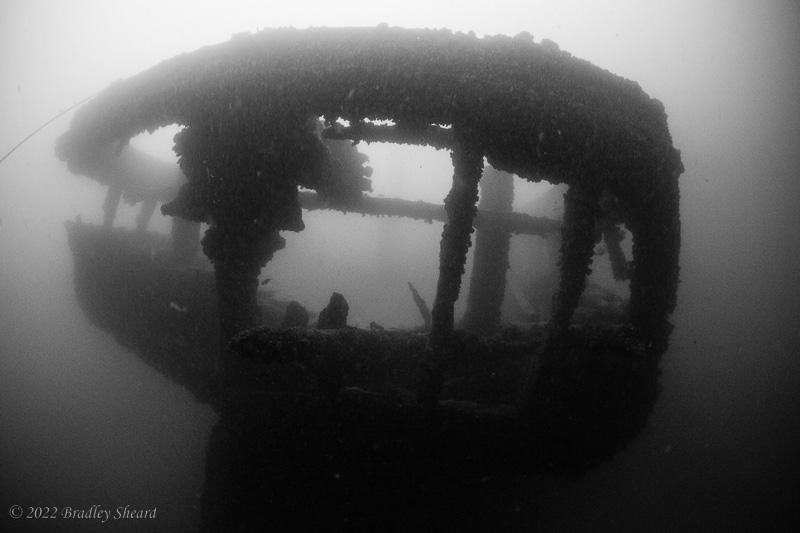 | 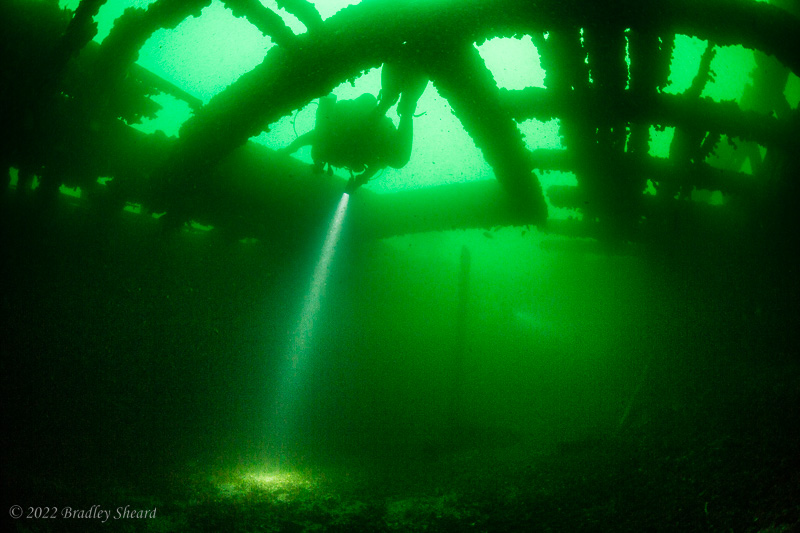 |
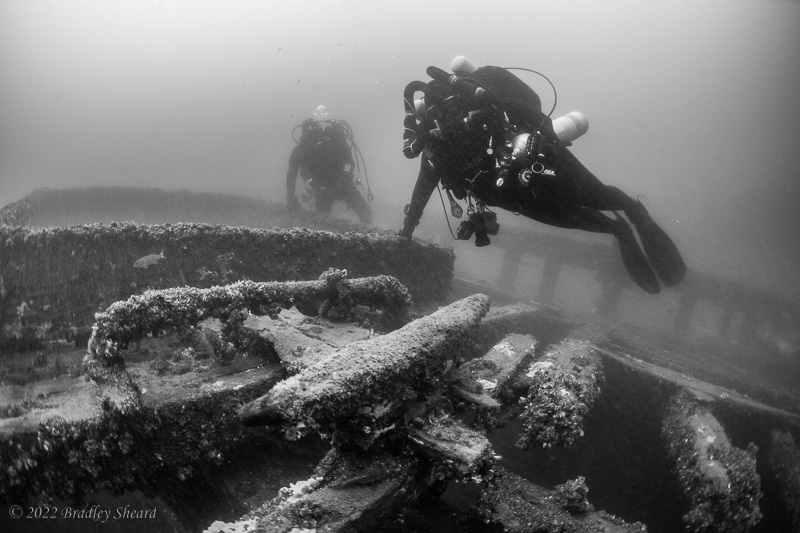 | 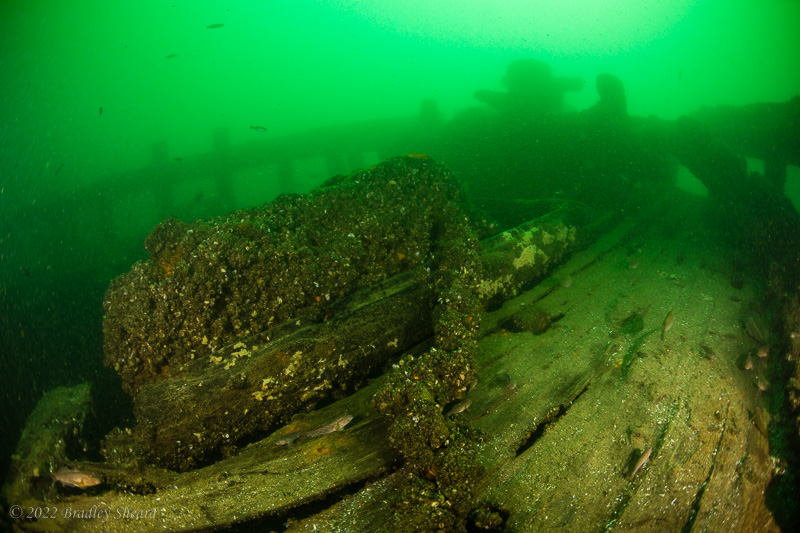 |
Keystorm (sunk October 26, 1912)
|
The cargo steamship Keystorm was built in Great Britain for Canadian owners in 1910. The 250-foot long steel freighter had picked up a cargo of coal in Charlotte, New York and was headed downriver on October 25, 1912. Early the following morning while enveloped in fog the Keystorm, under the command of Louis Daigneault, hit Outer Scow Shoal on the American side of the river, some twelve miles west of Brockville, Ontario. The Keystorm's hull was breached and she quickly began to fill with water. Two lifeboats were quickly launched, allowing the crew of 20 men to escape to safety on a nearby island. Five hours after hitting the shoal the freighter sank to the bottom of the river. An inquiry only weeks later found both the captain and mate negligent and both had their licenses suspended. The cargo of coal was salvaged seven years later, leaving the wreck lying on its starboard side on the bottom of the river. The upper side of the bow can be reached at a depth of only 25 feet, while the stern sits 115 feet down. Reference: Ship of the Month No. 58 Keystorm, The Scanner, Monthly News Bulletin of the Toronto Marine Historical Society. | 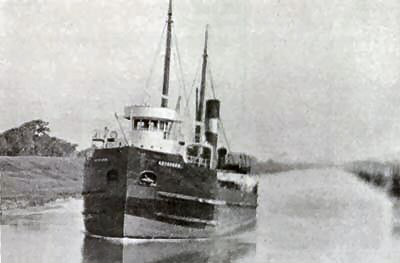 |
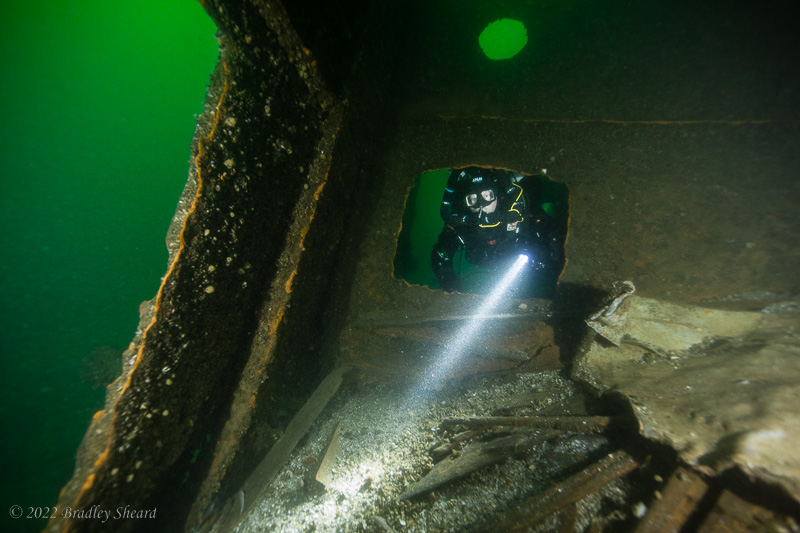 | 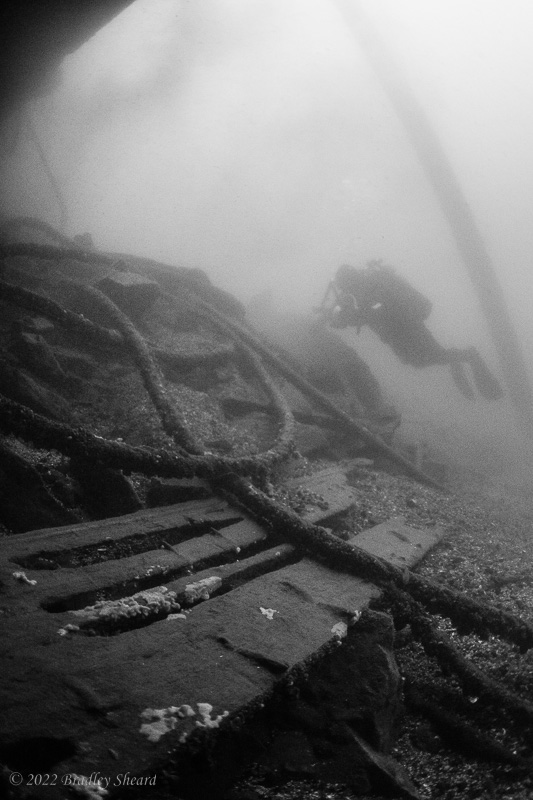 |
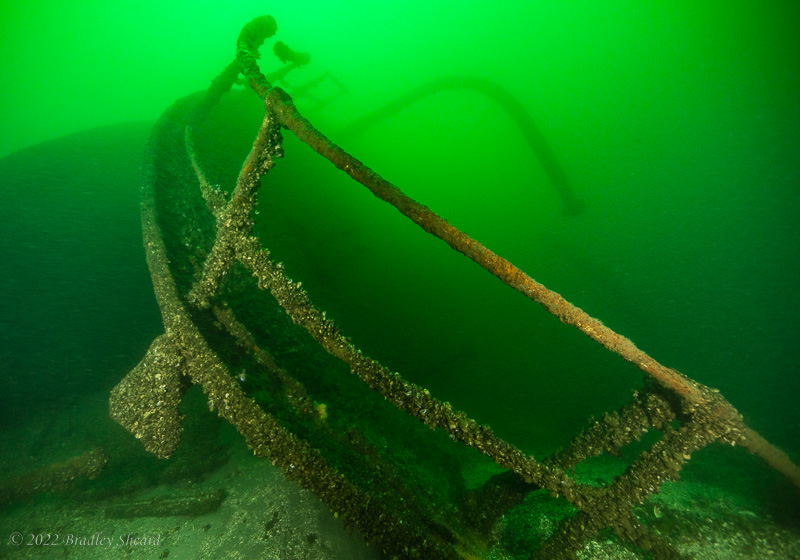 | |
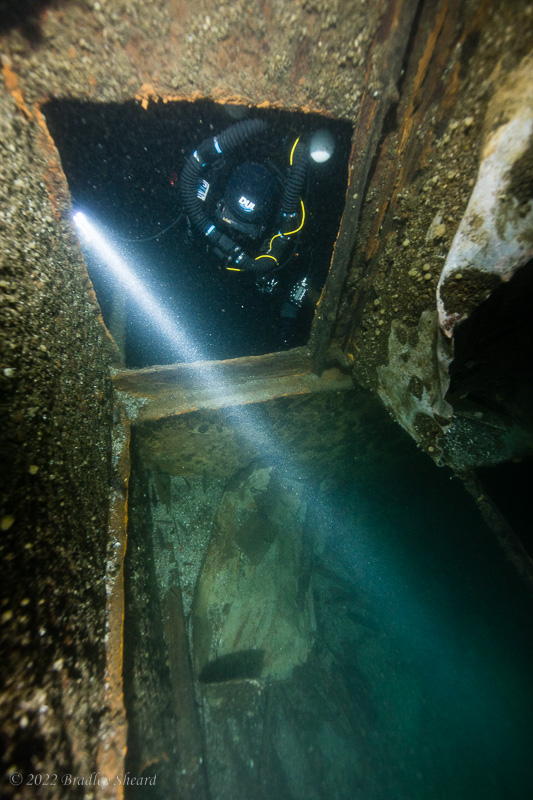 | 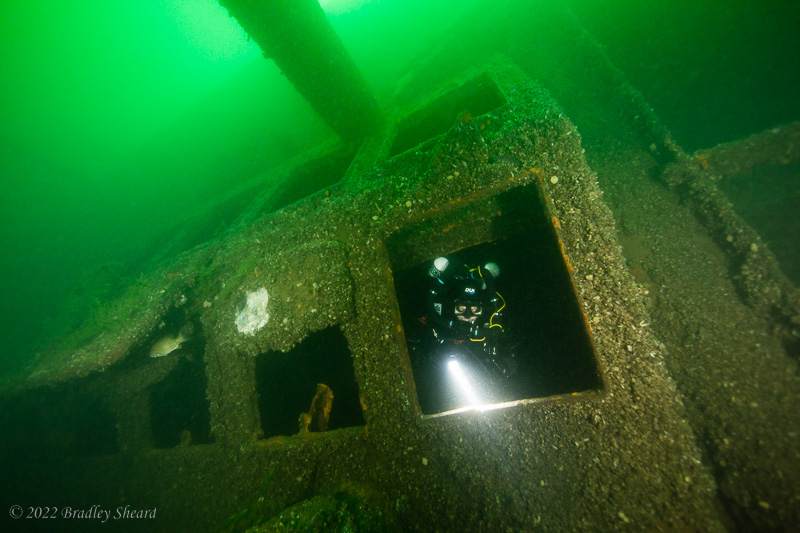 |
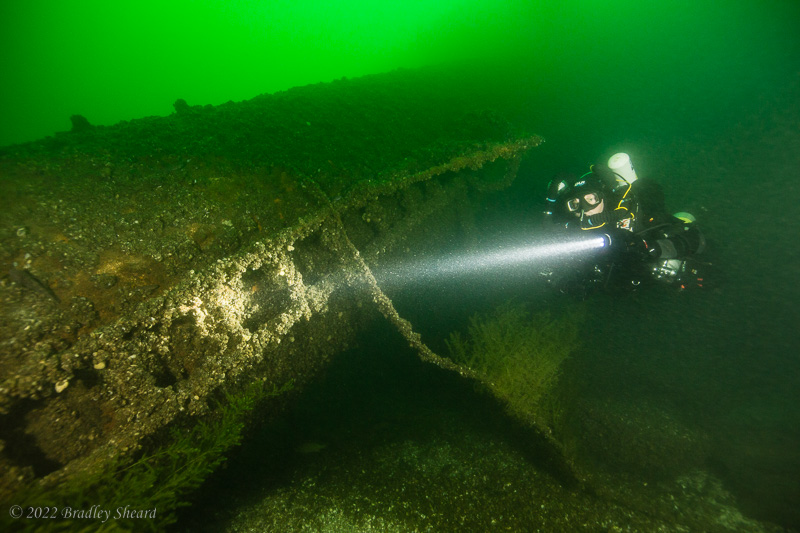 |
Roy A Jodrey (sunk November 20, 1974)
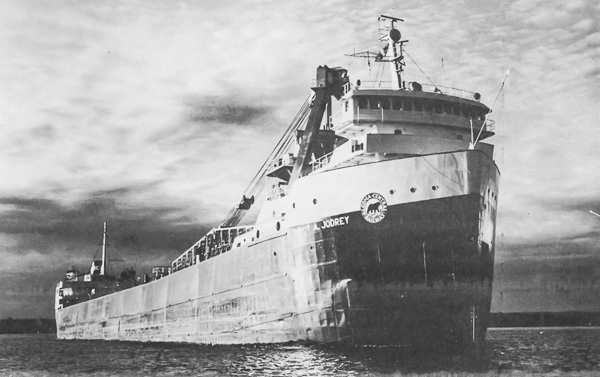 |
The modern self-unloading bulk carrier Roy A Jodrey was built in 1965 and was 640-feet long, clearly a large vessel. Bound upriver for Detroit and loaded with a cargo of iron ore pellets, she managed to hit Pullman Shoal off Wellesley Island near Alexandria Bay NY, ripping a large gash in the hull plating. Captain Hugh McDowall attempted to beach the ship to prevent her sinking, but she rolled over on her side, slipped off the rocky ledge and sank despite the effort. The crew of 29 were able to safely abandon her before she sank. The Roy A Jodrey settled on the river bottom at the base of a steep underwater cliff, with her bow literally up against the cliff, and the rest of her long hull stretching out into the 240-foot deep shipping channel. The Jodrey is an interesting but challenging dive. Deep with a strong current, the few dives I've made there were unquestionably dark and spooky, and reminded me of diving in the New York-New Jersey Mudhole. With lots of particulate matter suspended in the water, photography was a challenge. Perhaps on a day with better visibility. . . Reference: The Scanner, Monthly News Bulletin of the Toronto Marine Historical Society, v. 7, n. 3, December 1974. | ||
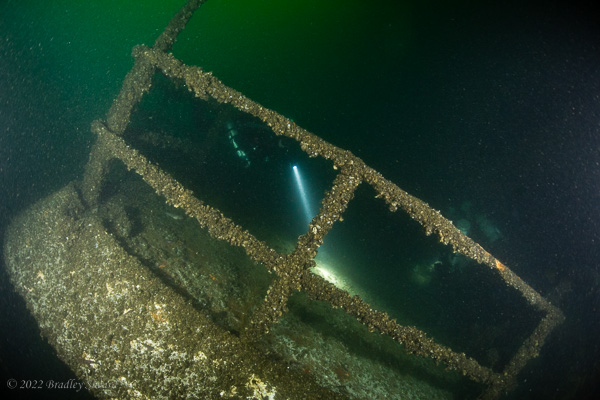 |
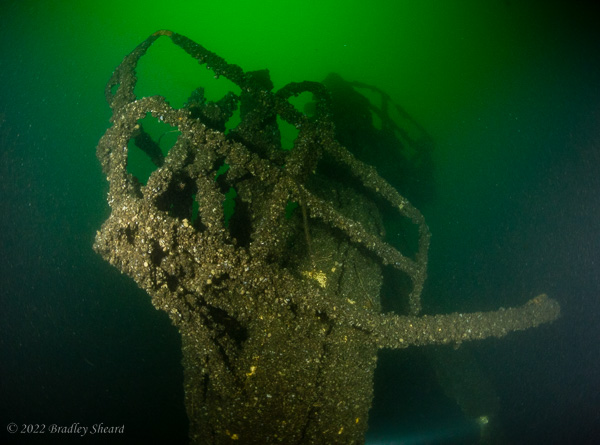 |
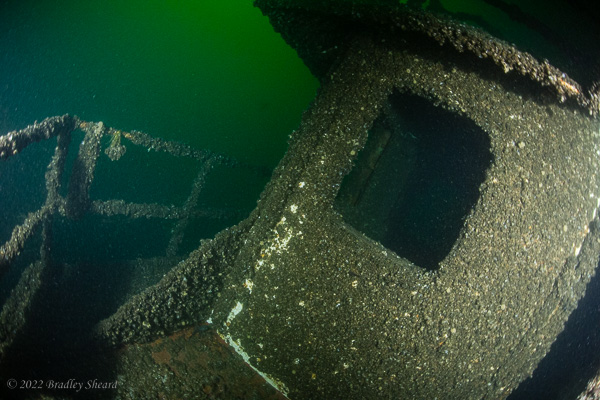 |
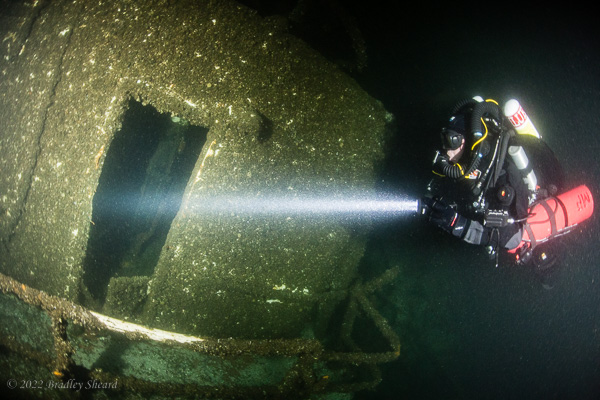 |
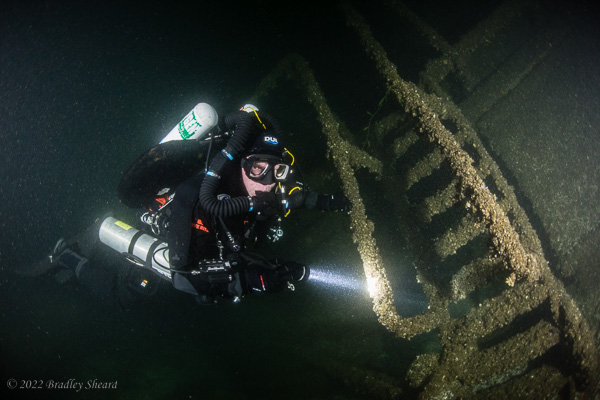 |
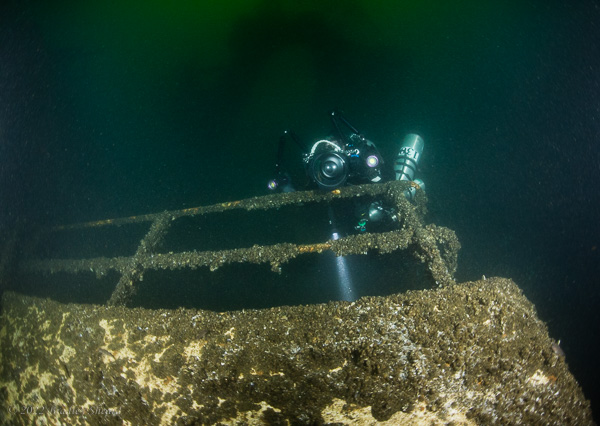 |
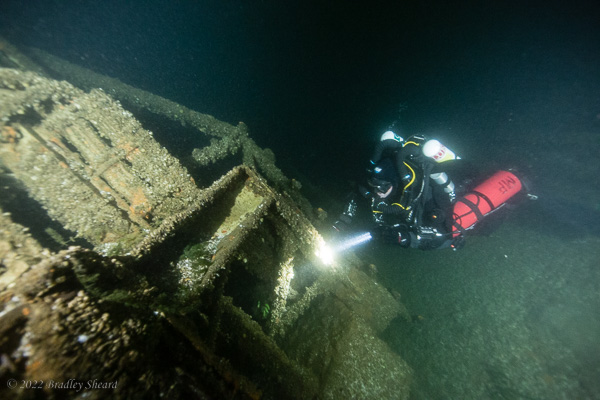 |
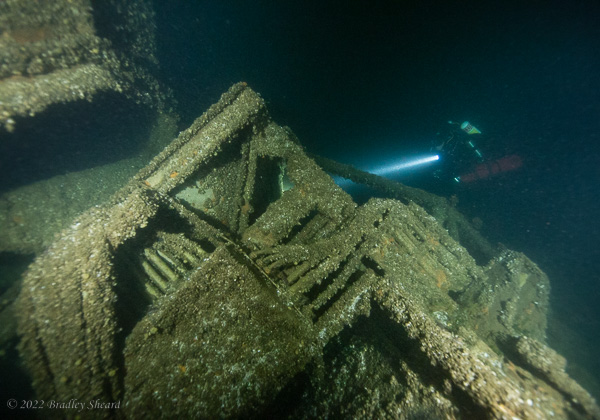 |
 |
